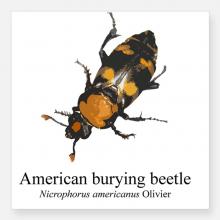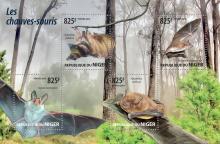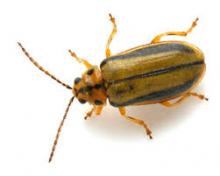American Burying Beetle Close To Extinction
Historically, the American burying beetle (Nicrophorus americanus) was found in 35 states, including Missouri, according to Bob Merz, zoological manager for invertebrates at the St. Louis Zoo and director of the Center for Conservation of the American Burying Beetle at the zoo’s Wildcare Institute. It is a partner with the U.S. Fish and Wildlife Service, the Missouri Department of Conservation and the Nature Conservancy in beetle restoration. The last orange-and-black American burying beetle found in Missouri was collected in 1972 in Newton County.










